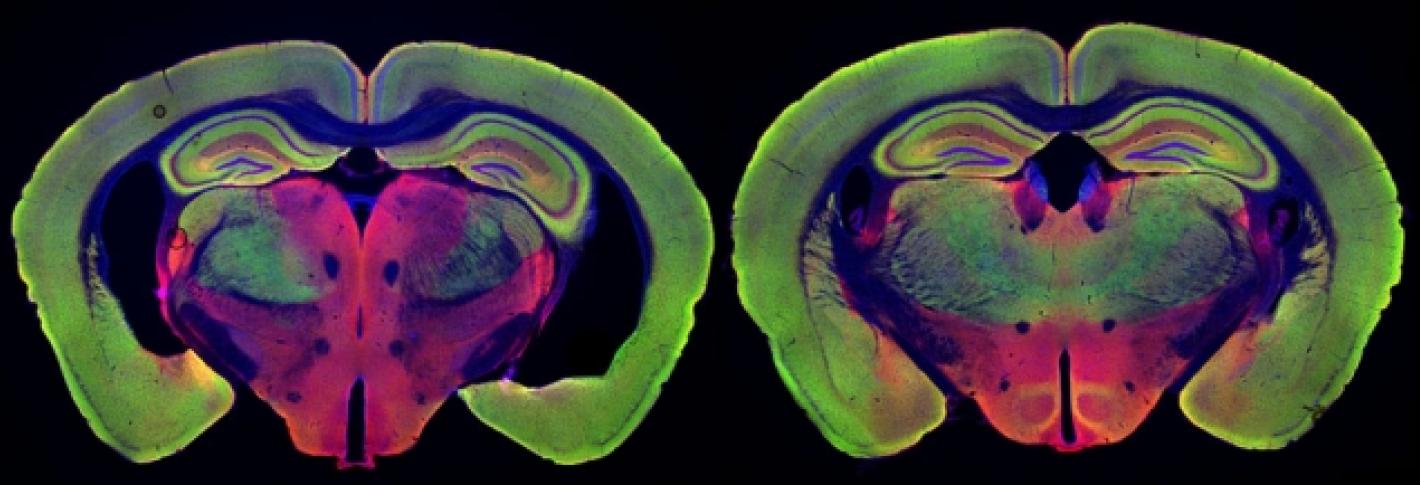
With evidence that the power of 40Hz “gamma” frequency brain waves, or rhythms, are decreased in mice modeling Alzheimer’s disease, the lab of Picower Professor Li-Huei Tsai asked the question: Would it affect the course of the disease to artificially boost the rhythm’s power in the brain?
In 2016 the lab discovered that it made a significant difference. Mice in whom they boosted the rhythm for an hour a day for a week, either with optogenetics or visually—by flashing LEDs at 40Hz—had less of the harmful amyloid plaques and tau tangles that are hallmarks of Alzheimer’s pathology. In 2019 the lab showed that longer term visual stimulation prevented the loss of neural circuit connections and the death of cells themselves. Mice experienced less brain atrophy and showed improvements in learning and memory. They also found that using 40Hz sound reduced amyloid and tau and improved learning and memory. Using light and sound together was especially powerful.
Above: Sensory exposure to 40Hz light prevented neurodegeneration in the brains of mice as evidenced by the difference in the size of open spaces, or ventricles. The untreated Alzheimer's mouse brain is on the left. One treated with sensory stimulation is on the right.
Importantly the MIT team and other researchers have gone on to show that sensory stimulation of 40Hz rhythm power also appears to help people with Alzheimer’s disease retain brain volume and cognitive ability.
How does it work? In their ongoing investigations of the underlying mechanisms, Tsai’s lab became the first to show that increasing gamma promotes improved neural network connectivity, widens brain blood and glymphatic system vessels to increase waste clearance, and causes an improved disease response by brain immune cells called microglia, for instance by reducing their inflammatory state. These differences were reflected in substantial changes in gene expression in neurons and microglia that the team measured in mice exposed to 40Hz sensory stimulation. These findings are the first to directly link brain wave changes with differences in cellular and molecular activity in neurons and their supporting cells, or glia.

